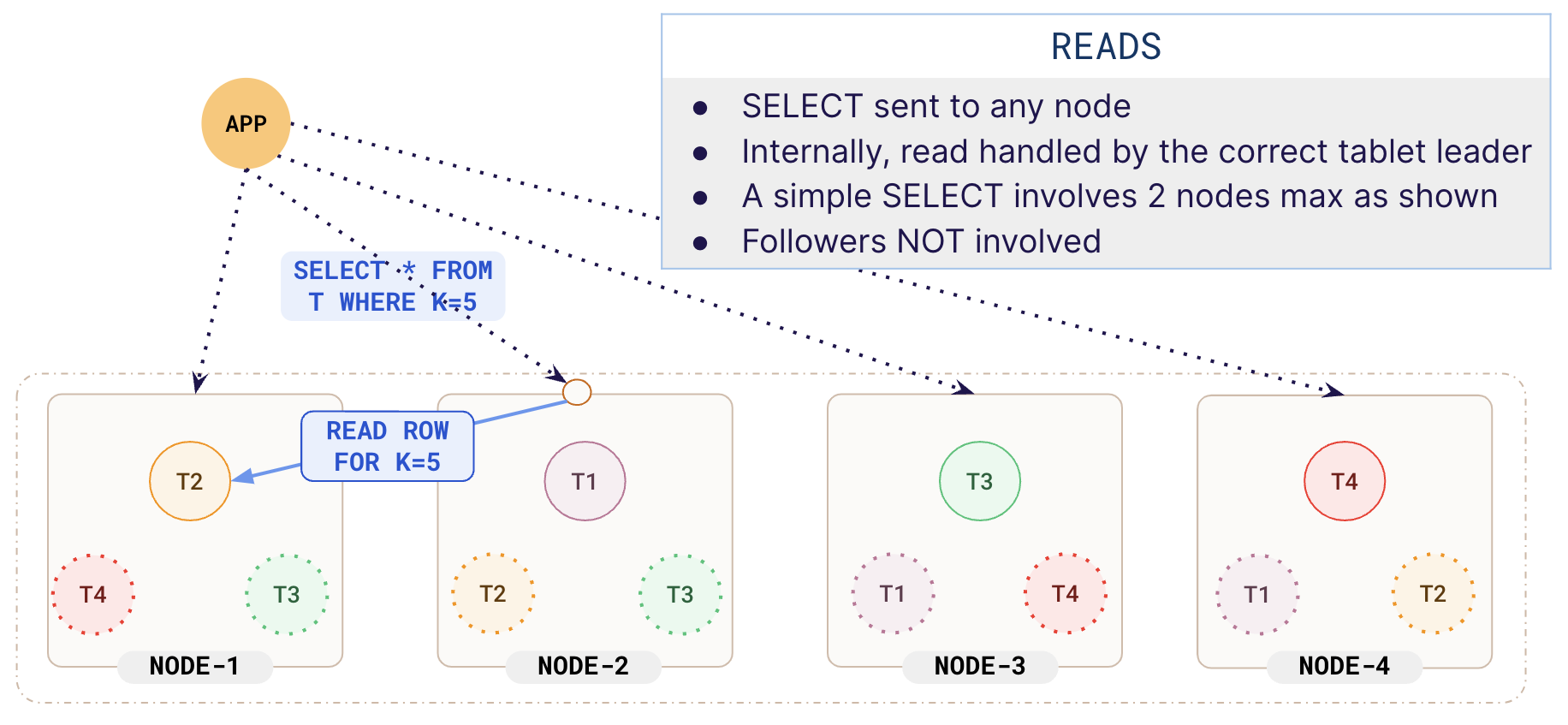Scaling reads
Reads scale linearly in YugabyteDB as more nodes are added to the cluster. The read I/O path is very straightforward. As the mapping of a row to a tablet is deterministic, the system knows exactly where to look for a row. Let's go over how reads work and see how well they scale.
How reads work
When an application connected to a node sends a read request for a key, say SELECT * FROM T WHERE K=5, YugabyteDB first identifies the location of the tablet leader containing the row with the key specified (K=5). After the location of the tablet leader is identified, the request is internally re-directed to the node containing the tablet leader for the requested key. The leader has the latest data and responds immediately.
A basic select statement involves a maximum of just 2 nodes. This redirection is completely transparent to the application.
In the following illustration, you can see that the application sent the request for K=5 to NODE-2. The system identified that the key K=5 is located in NODE-1 and internally redirected the request to that node.

Multiple applications can connect to any node and the reads will be redirected correctly.
Sysbench workload
The following chart shows how reads scale horizontally in YugabyteDB using a Sysbench workload of basic selects. The cluster consisted of m6i.4xlarge instances and had 1024 connections. All requests had a latency of less than 3ms.

You can clearly see that with an increase in the number of nodes, the number of reads scales linearly.